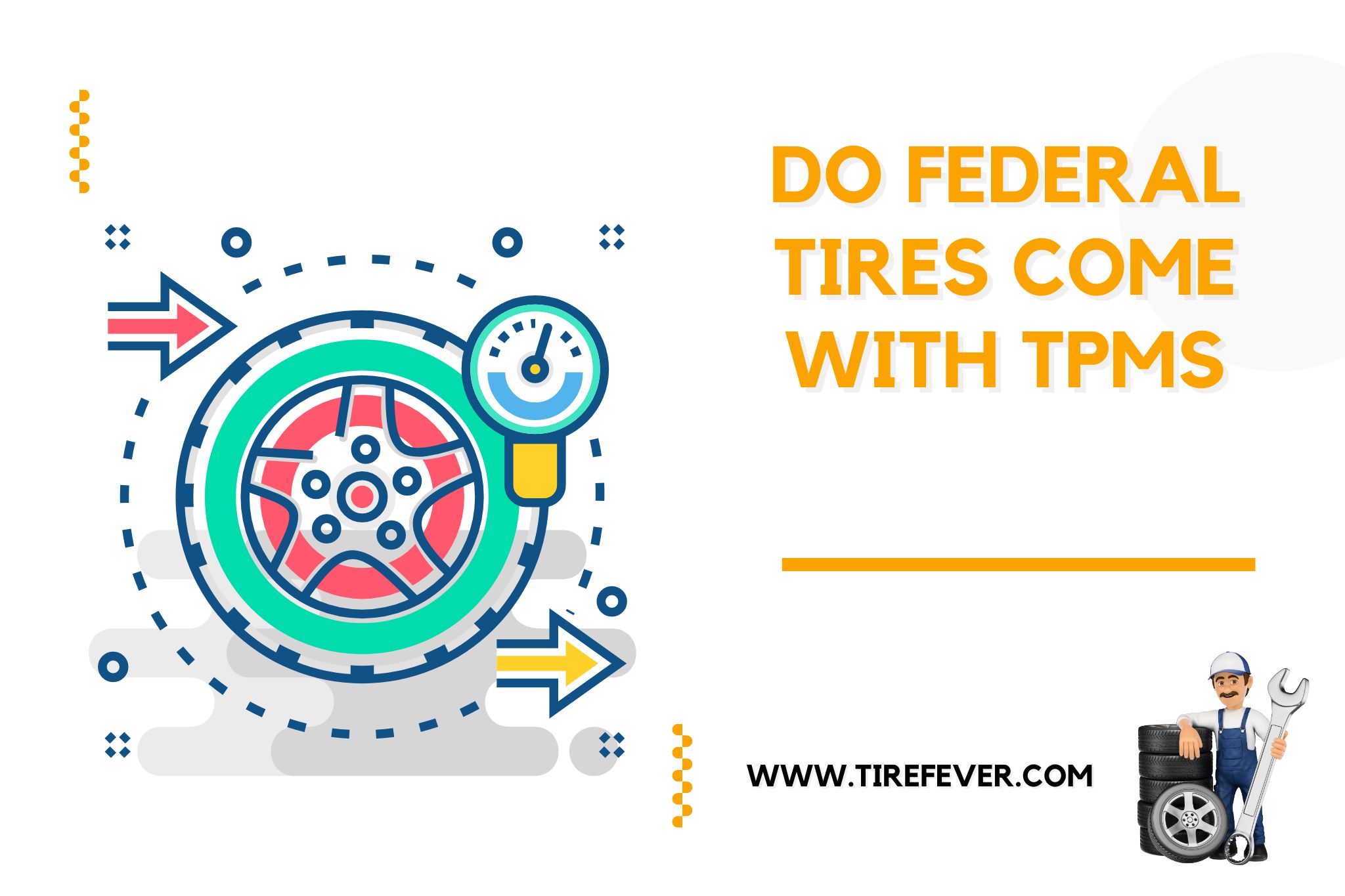Are you in the market for a new set of Federal tires for your vehicle? One important question you may have is whether or not Federal tires come equipped with TPMS (tire pressure monitoring system). Understanding the features and technology that come with your tires can have a significant impact on your driving experience and safety.
TPMS has become a standard feature in modern vehicles, providing real-time information about tire pressure and potential issues. Many drivers are curious to know if Federal tires come with this beneficial system already integrated. In this blog post, we’ll delve into the topic of TPMS and Federal tires, exploring the options and features available to help you make an informed decision for your vehicle.
Highlights:
- Federal Tires come with TPMS on certain models for added safety.
- TPMS sensors are crucial for maintaining optimal tire pressure and vehicle performance.
- It’s important to reset TPMS after installing new tires to ensure accurate monitoring.
Do Federal Tires Come with TPMS
Yes, Federal tires come with TPMS (Tire Pressure Monitoring System) on certain models. TPMS is a safety feature that alerts drivers when a tire is significantly under-inflated, reducing the risk of tire blowouts and accidents. Federal Tires incorporates this technology into their products to provide added safety and peace of mind for drivers.
By including TPMS in their tires, Federal Tires demonstrates their commitment to innovation and safety, aligning with the industry standards and regulations. This feature also helps drivers maintain optimal tire pressure, which can improve fuel efficiency and extend the life of the tires. With TPMS-equipped Federal Tires, drivers can have confidence in their vehicle’s safety and performance on the road.
You May Also Like: Do GT Radial Tires Come with TPMS
Do all Federal Tires come with TPMS?
Federal Tires is a well-known brand with a wide range of tire offerings. Some of their tires come with TPMS (Tire Pressure Monitoring System) sensors, while others may not. It largely depends on the specific tire model and its intended use.
When considering a tire purchase, it’s important to check the product specifications and features to see if TPMS sensors are included. TPMS is crucial for maintaining proper tire pressure, so it’s worth confirming whether a Federal Tire option has this feature before making a purchase.
Ultimately, to ensure that your vehicle is equipped with TPMS sensors, it’s recommended to thoroughly review the product details and consult with a professional tire dealer for guidance on the best Federal Tires for your specific needs.
Do new tires come with TPMS sensors?
Yes, new tires often come with TPMS sensors. TPMS, also known as Tire Pressure Monitoring System sensors, are typically included with new tire purchases to ensure that the tire pressure is monitored and maintained at the recommended levels.
These sensors are essential for vehicle safety and efficiency, as they alert drivers when tire pressure is low, reducing the risk of accidents and improving fuel economy.
TPMS sensors are an integral part of modern vehicles’ tire systems, and they are crucial for maintaining optimal tire pressure levels. As a result, tire manufacturers and retailers often include TPMS sensors with new tire purchases to ensure that customers receive a complete and functional tire package.
This helps to streamline the tire replacement process and ensures that drivers have everything they need to maintain safe and efficient driving conditions.
Also Read: Do Maxxis Tires Come with TPMS
Do you need to reset TPMS after new tires?
Yes, it is recommended to reset the TPMS (Tire Pressure Monitoring System) after installing new tires. This is because the TPMS needs to be recalibrated to account for the changes in tire pressure and rotation. If the TPMS is not reset, it may continue to display the old tire pressure readings, leading to inaccurate information and potentially compromising safety.
The TPMS can be reset using a specific procedure outlined in the vehicle’s manual or by using a TPMS tool. It is important to reset the TPMS after new tires to ensure accurate tire pressure monitoring and to maintain optimal vehicle performance. Additionally, resetting the TPMS can help prevent unnecessary warning lights from appearing on the dashboard and ensure that the system is accurately monitoring tire pressure.
Can overinflated Federal tires cause TPMS light to come on?
?
Yes, overinflated Federal tires can cause the TPMS (Tire Pressure Monitoring System) light to come on. When tires are overinflated, it can lead to increased pressure inside the tire, causing the TPMS to detect an abnormal pressure reading and triggering the warning light to illuminate on the dashboard.
Overinflated tires can also affect the overall handling and performance of the vehicle, as well as increase the risk of a blowout or premature tire wear. It is important to regularly check and maintain the proper tire pressure recommended by the vehicle manufacturer to ensure safety and optimal performance. If the TPMS light comes on, it is crucial to address the issue promptly by adjusting the tire pressure to the correct specifications.
Is it OK to drive with TPMS light on?
Driving with the TPMS light on is not recommended as it indicates low tire pressure, which can compromise vehicle safety and performance.
Low tire pressure can lead to reduced traction, decreased fuel efficiency, and increased risk of tire blowouts. Ignoring the TPMS light can also lead to premature tire wear and potential damage to the tires and wheels.
Continuously driving with the TPMS light on can also cause further damage to the tires, leading to increased risk of tire failure and potential accidents.
It is important to address the issue as soon as possible by checking the tire pressure and inflating the tires to the recommended levels. Ignoring the TPMS light can result in costly repairs and compromise overall vehicle safety.
Also Read: Are Mickey Thompson Tires Run Flat?
Final Thoughts
Federal tires come equipped with TPMS (Tire Pressure Monitoring System) on certain models, aligning with industry standards and regulations for safety and innovation. It is important to check the product specifications before making a purchase to confirm if TPMS sensors are included. The TPMS should be reset after installing new tires to ensure accurate monitoring, and overinflated tires can cause the TPMS light to come on, affecting vehicle performance and safety. By understanding and addressing these factors, drivers can make informed decisions and maintain optimal tire pressure for a safe and efficient driving experience with Federal tires.
This post contains affiliate links. Read the full disclosure here.


I am passionate about all things automotive and have a deep understanding of the topic. As a mechanic, I use my free time to share knowledge of everyday challenges that any car owner can experience – helping you make informed decisions about tires.

